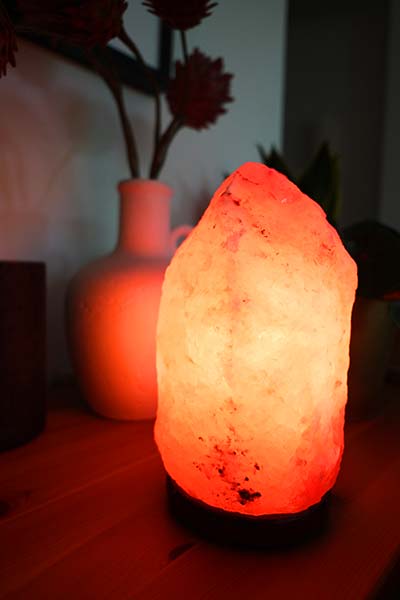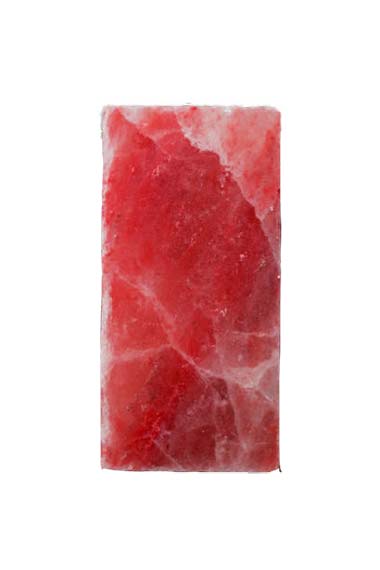A salt rock lamp is a natural and aesthetically pleasing light source crafted from Himalayan salt crystals. Believed by some to emit negative ions, these lamps are thought to potentially contribute to a calming atmosphere, improved air quality, and a soothing ambiance, although scientific evidence supporting these claims remains limited. The distinctive pink or orange glow of a salt rock lamp adds a touch of warmth to spaces, making it a popular choice for those seeking both decorative and potential holistic benefits.
Salt rock lamp manufacturing process
The manufacturing process of salt rock lamps involves several steps, from sourcing the raw materials to shaping and finishing the final product. Here’s a general overview of the manufacturing process for salt rock lamps:
1. Raw Material Extraction:
The primary raw material for salt rock lamps is mined from salt deposits, often from the Khewra Salt Mine in the Himalayan region. The salt extracted is typically halite, which gives the lamps their distinctive pink or orange color.
2. Selection and Sorting:
The extracted salt is sorted and selected for quality. The goal is to identify pieces with the desired color and transparency for use in the lamps.
3. Shaping and Carving:
Skilled artisans carve the selected salt blocks into the desired shapes. Common shapes include chunks, spheres, or specially designed forms for lamps. Intricate designs may also be carved into the salt.
4. Hollowing and Core Installation:
To accommodate a light source, the carved salt piece is hollowed out to create a space for a bulb or candle. The hollowed space is where the light will be placed to illuminate the salt.
5. Finishing Touches:
The carved salt lamp undergoes finishing touches, which may include smoothing rough edges, cleaning the surface, and ensuring the lamp is stable and safe to use.
6. Installation of Lighting Components:
The lamp is equipped with a lighting fixture, which typically includes a socket, cord, and sometimes a dimmer switch. Some lamps use small, low-wattage bulbs or LED lights.
7. Quality Control:
Each lamp undergoes quality control checks to ensure it meets safety standards and aesthetic requirements. This includes checking the integrity of the salt, the stability of the lamp, and the functionality of the lighting components.
8. Packaging:
The finished salt rock lamps are carefully packaged

for transport and retail. Packaging may include protective materials to prevent damage during shipping.
It’s important to note that while salt rock lamps are popular for their aesthetic appeal and potential benefits, scientific evidence supporting health claims is limited. Consumers should be cautious about exaggerated or unverified claims related to the health benefits of salt lamps and consider them primarily as decorative items that may enhance the ambiance of a space.
Origin of rock salt
Rock salt, or halite, is a type of salt that is found in solid form and is composed primarily of sodium chloride (NaCl). It has various origins, but one of the most notable sources of rock salt is through the process of evaporation in ancient seas or saltwater bodies. Here’s an overview of the origin of rock salt:
1. Evaporation from Ancient Seas:
Many deposits of rock salt originated from the evaporation of ancient seas. Over geological time periods, seawater trapped in large basins or enclosed areas would gradually evaporate due to heat from the sun. As the water evaporated, it left behind deposits of various minerals, including salt.
2. Formation in Salt Basins:
In certain regions, tectonic activity and the geological process of subsidence created basins where seawater could accumulate. Over time, repeated cycles of seawater entering the basin and subsequent evaporation led to the deposition of salt and other minerals.
3. Deposition in Salt Layers:
The salt that precipitated from evaporating seawater often formed thick layers or beds within the Earth’s crust. Over millions of years, these layers became buried by sediment, preserving the salt deposits.
4. Geological Uplift and Salt Extraction:
Geological forces, such as tectonic activity, uplifted some of these salt deposits closer to the Earth’s surface. This uplift allowed for easier access to salt through mining operations.
5. Salt Mines:
Mining operations, such as those in the Khewra Salt Mine in Pakistan, extract rock salt from underground deposits. These mines often expose extensive salt formations, and miners extract the salt for various uses.
6. Sea Salt Deposits:
While rock salt is often associated with ancient seabeds, certain deposits may also form in more recent salt flats, where seawater evaporates in present-day coastal areas.
The Khewra Salt Mine, located in the Salt Range mountains of Pakistan, is one of the world’s largest and oldest salt mines, providing a significant portion of the world’s rock salt. Other notable sources include salt mines in the United States, Poland, and various regions with geological conditions conducive to salt deposition.
In summary, the origin of rock salt can be traced back to the evaporation of ancient seas and the subsequent geological processes that led to the formation of salt deposits within the Earth’s crust.
Looking for salt rock lamp: Click here





